Solar panel manufacturing technology has come a long way over the years, and there have been significant advancements recently with the introduction of mono PERC, Topcon and HJT technology. These new technologies have led to improvements in solar panel efficiency, durability, and overall performance, thus, making them a more viable and cost-effective option for renewable energy production. Let us discuss each solar PV module technology and understand the differences.
Click here to get more.
PERC Solar PV Modules
In recent years, Passivated Emitter and Rear Contact (PERC) solar panels have been gaining popularity in the solar panel industry as a viable option for creating more efficient solar power. These solar panels use PERC solar cells, an improved version of conventional solar cells. Their modified design allows them to generate 6 to 12 per cent more energy than their traditional counterparts.
About PERC Technology
PERC stands for Passivated Emitter and Rear Cell. The PERC solar cell has a presence of a passivation layer at the back side of the cell, which helps to minimize recombination losses and increase light absorption. The key role of the rear-side passivation layer is to reflect light that passes through the silicon cell without being absorbed back into the silicon. By reflecting this light, the passivation layer gives the solar cell a second chance at absorbing it, resulting in significant improvement in efficiency.
Advantages of PERC Solar Panels
PERC panels offer several benefits over traditional solar panels, which make them a popular choice for solar installers and customers. Here are the key advantages:
-
Increased Energy Production
: PERC solar panels have higher efficiency compared to traditional panels, resulting in increased power generation. It can add up to a 5% increase in energy production for a full PV system.
-
Increased Low-light and High-heat Performance
: PERC panels perform exceptionally well in low-light and high-heat environments, providing an increased efficiency of around 3%.
-
High Area Efficiency
: Because PERC panels are more efficient, they can achieve the same power output as traditional panels with fewer panels. This means a solar power system using PERC panels will need a lesser amount of space for installation.
-
Reduced BOS Costs
: With PERC panels, fewer panels can achieve the same output, resulting in reduced balance of system (BOS) costs, labour costs, and other soft costs such as inverters and disconnects.
Disadvantages of PERC solar panels
PERC solar panels are generally more expensive than traditional solar panels.
-
PERC solar panels
are slightly more sensitive to shading than traditional solar panels.
PERC solar panels are a relatively new technology, there may be some uncertainty about their long-term durability and performance.
Applications of PERC solar panels
-
Residential rooftops:
Mono PERC solar panels
are a popular choice for residential rooftops due to their high efficiency, which allows homeowners to generate more electricity from a smaller roof space.
-
Commercial buildings:
Mono PERC solar panels can also be used on commercial buildings, such as office buildings, shopping malls, and warehouses, to offset electricity costs and reduce carbon emissions.
-
Large-scale solar power plants:
Mono PERC solar panels can be used in large-scale solar power plants to generate electricity on a utility scale.
Tunnel oxide passivated contact (TOPCon) solar technology is a relatively new type of solar cell technology. TOPCON stands for 'Tunnel Oxide Passivated Contact'.
About TOPCon Technology
The TOPCon solar cell structure consists of a thin tunnel oxide layer sandwiched between a transparent conductive oxide (TCO) layer and a p-doped crystalline silicon layer. The TCO layer acts as a front contact for the solar cell, while the p-doped layer acts as the absorber layer. The tunnel oxide layer acts as a passivation layer, preventing the recombination of charge carriers at the surface of the solar cell. Increased efficiency enables the solar panel to capture a greater amount of energy per unit area.
Advantages of TOPCon Solar Panels
The adoption of TOPCon technology has gained popularity due to several benefits associated with it. Here are some of the key advantages of using TOPCon solar cell technology:
-
Manufacturing process: TOPCon solar cells can be manufactured with the same machines as P-type solar cells, i.e. manufacturers don't need to make any high capital investment to adopt this technology, making it easier and more cost-effective to produce TOPCon solar panels on a large scale.
-
Higher efficiency: TOPCon cells are more efficient in converting sunlight into electricity than P-type cells. The maximum efficiency of TOPCon cells is around 28%, which is higher than the maximum efficiency of about 24% for PERC cells. This higher efficiency results in more electricity generation from a given surface area.
-
Lower degradation: TOPCon modules have a lower power degradation during the first year and over the 25 years of use, compared to PERC solar PV modules. Hence, they will maintain their efficiency for a longer time, resulting in a longer lifespan of the solar panels.
-
Lower temperature coefficient: The temperature coefficient of TOPCon solar panels is lower than that of PERC solar panels. It means that TOPCon solar panels can maintain their efficiency at higher temperatures, which is particularly important in hot climates.
-
Bifaciality rate: TOPCon cells have higher bifaciality than PERC cells. It means that TOPCon solar panels can generate electricity from both the front and the back of the solar panel.
-
Low light performance: TOPCon solar modules have higher efficiency in low-light conditions than PERC modules. It means that TOPCon solar panels can generate more electricity even when there is not enough sunlight.
Disadvantages of TOPCon Solar PV Module Technology
Here are some potential challenges before TOPCon solar cell technology
-
Cost
: TOPCon solar cells can be more expensive to produce than traditional solar cells due to the additional materials and manufacturing steps required to create the thin-film layers needed for the cell.
-
Complexity:
The manufacturing process for TOPCon cells is more complex than for traditional cells, which can make it more difficult to scale up production to meet high demand.
-
High-temperature processing
: The production of TOPCon cells requires high-temperature processing steps, which can lead to increased energy consumption and carbon emissions, as well as the risk of defects or damage to the cell.
-
Sensitivity to impurities:
TOPCon cells are more sensitive to impurities in the materials used to create them, which can lead to reduced efficiency or even complete failure of the cell.
Comparison Between PERC and TOPCon Solar Technology
When compared to a PERC solar cell, a TOPCon solar cell appears visually identical once installed in a module. However, Unlike PERC cells, TOPCon cells are made from n-doped silicon, which is more challenging to manufacture. However, this material allows TOPCon cells to achieve higher degrees of efficiency.
Another significant difference is the more laborious passivation process used for TOPCon cells. Despite being more technically challenging, this process achieves a greater effect. Specifically, applying a layer of polycrystalline silicon to the rear side of the cell requires significant technical effort but allows the solar cell to handle higher voltages, resulting in an increase in overall efficiency.
Applications of TOPCon Solar Panels
-
Utility-scale solar power plants:
TOPCon solar panels are often used in utility-scale solar power plants due to their high efficiency, which allows for more electricity to be generated from a smaller area.
-
Agriculture and farming:
TOPCon solar panels can be used for agricultural applications such as water pumping, irrigation, and crop drying, providing off-grid electricity to remote areas.
-
Electric vehicle charging stations:
TOPCon solar panels can be used to power electric vehicle charging stations, allowing for clean and sustainable transportation.
HJT Solar PV Module
Heterojunction (HJT) solar cell technology is a relatively new type of solar cell that has been gaining popularity in recent years. The design and structure of HJT allow for a more efficient conversion of sunlight into electricity.
About HJT Solar Panel Technology
Heterojunction solar panels are a type of photovoltaic panel that consists of three layers of photovoltaic material. These panels incorporate two distinct technologies: crystalline silicon and amorphous "thin-film" silicon, which work in harmony to produce electricity.
HJT cells consist of three main materials: Crystalline Silicon (c-Si), Amorphous Silicon (a-Si) and Indium Tin Oxide (ITO)
The first layer, made of amorphous silicon, captures sunlight before it reaches the crystalline layer, as well as any light that reflects off the underlying layers. The middle layer is composed of monocrystalline silicon, which is primarily responsible for converting most of the sunlight into electricity. The final layer is another amorphous thin-film silicon layer, located behind the crystalline silicon, which captures any remaining photons that have passed through the first two layers.
By combining these two technologies, heterojunction solar panels can generate more energy than either technology could produce independently. These panels can achieve efficiencies of 25% or higher, making them an attractive choice for solar energy generation.
Advantages of HJT Solar Panels
Here are the major benefits of Heterojunction (HJT) solar panels summarized into short points:
-
High Efficiency:
HJT solar panels have a conversion efficiency of 26.07% for monofacial modules and over 30% for bifacial, making it one of the most efficient solar technologies in the industry.
-
Good Temperature Coefficient:
HJT cells are less affected by changes in temperature, making them great for use in high-temperature locations.
-
High Bifaciality:
HJT cells have a high bi-faciality factor of 92%, making them a great choice for utility-scale applications that can take advantage of the albedo resource.
-
Easy Manufacturing Process: The HJT solar PV module manufacturing process only involves 5-7 steps, and the cost of equipment is constantly being reduced, making it a cost-effective and promising technology for the future of solar energy.
Disadvantages of HJT Solar Panels
Heterojunction (HJT) solar panels offer several advantages, but they also have some drawbacks. Here are the main disadvantages of HJT solar panels:
-
High Cost:
HJT panels are more expensive due to the additional steps in manufacturing and costly materials.
-
Fragility:
HJT panels are thin and have a complex structure, making them more vulnerable to damage.
-
Sensitivity to Humidity:
HJT panels are sensitive to moisture, which can reduce their efficiency or damage the panel.
-
Complexity of Production:
The manufacturing process for HJT panels requires specialized knowledge and equipment.
-
Low Manufacturing Scale:
HJT panels are produced at a lower scale than traditional panels, which can make them more expensive and harder to find.
-
New Technology:
HJT panels are a relatively new technology, and experience with installation and maintenance may be limited.
Comparison Between HJT and TOPCon Solar PV Module Technology
TOPCon and HJT solar panels are two advanced solar technologies that offer high efficiency and reliability. Here are some general features where two solar panels can differ:
HJT panels have higher efficiency and bi-faciality, but are more complex and expensive to manufacture, and are sensitive to humidity.
TOPCon panels have a simpler manufacturing process, lower cost, and are less sensitive to humidity, but have lower efficiency and bi-faciality compared to HJT panels.
Applications of HJT Solar Panels
-
Building-integrated photovoltaics (BIPV):
HJT solar panels can be integrated into building facades, roofs, and windows to generate electricity while also providing architectural design and energy-saving benefits.
-
Space-constrained applications:
HJT solar panels are a good choice for space-constrained applications such as portable solar chargers, off-grid cabins, and small boats, due to their high efficiency and compact size.
-
Utility-scale solar power plants:
HJT solar panels can be used in large utility-scale solar power plants, especially for projects with higher solar irradiance, which increases the efficiency of the HJT panels.
Explore more:
How Does Luan Solar 415W Perform?
How Does Jinko Solar 450W Work?
How to Select 144 Half Cells Solar Panels Custom?
How to Choose Affordable 120 Half Cells Solar Panels?
Unlocking Efficiency: 144 Half Cell Solar Panels
How Will Sustainable Half Cells Change Energy Future?
Discover the Power of PERC Mono Solar Panels: 5 Key BenefitsFor more information, please visit 潞安.
Conclusion
In summary, HJT panels offer the highest efficiency and bi-faciality, but are the most complex and expensive to manufacture and are sensitive to humidity. TOPCon solar panels have a simpler manufacturing process and are less sensitive to humidity, but have lower efficiency and bifaciality compared to HJT panels. Mono PERC panels have a simpler manufacturing process than both HJT and TOPCon panels but have lower efficiency and bifaciality compared to HJT panels.
In India, PERC (Passivated Emitter and Rear Cell) technology is widely used and is considered a good choice for most applications. Moreover, Mono PERC solar panels are known for their reliability, durability, and longevity. Topcon panels are relatively expensive and may not be cost-effective for all applications. Both TOPCon & HJT solar panels are also relatively expensive and Both TOPCon & HJT may not be widely available in India.
We can conclude Mono PERC panels are a good choice for most solar applications in India, but the suitability of a particular technology ultimately depends on a variety of factors. It is best to consult with a reputable solar energy company to determine the most appropriate technology for your specific needs and budget.
The efficiency and performance of solar cells have been constantly improving in recent years, one such development that has gained a lot of attention in the industry is the TOPCon solar cells (Tunnel Oxide Passivated Contact).
Recently TOPCon cell has been unstoppable in getting a historic innovation breakthrough, In October , Jinko revealed that the efficiency of TOPCon solar cell has exceeded 26.89%, which is the most efficient solar cell in the world.
In this blog post, we will take a closer look at TOPCon solar cell from'
- Working Principle
- Advantages
- Cost Components
- Comparison with PERC Mono
What Is A TOPCon Solar Cell
?
TOPCON stands for Tunnel Oxide Passivated Contact, TOPCON solar cell is a type of solar cell that uses a tunnel oxide layer to passivate the contact between the front and rear layers of the cell.
This passivation layer reduces the recombination of charge carriers, improving the cell's efficiency. TOPCon solar cells are also known for their excellent spectral response and low-temperature coefficient, making them ideal for use in hot and humid climates.
N-Type TOPCon Silicon Cells
Cells built on an N-type silicon substrate offer improved performance over the more common P-type silicon due to a greater tolerance to impurities which increases overall efficiency. In addition, N-type cells have a lower temperature coefficient compared to both mono and multi-P-type cells. N-type cells also have a much lower rate of LID or light-induced degradation and do not generally suffer from LeTID (light and elevated temperature-induced degradation) which is a common problem with P-type cells.
TOPCon or Tunnel Oxide Passivated Contact refers to a specialized rear-side cell passivation technique that helps reduce the internal recombination losses in the cell and boosts cell efficiency. The process has been available for several years but is now becoming the new industry standard as manufacturers strive to increase efficiency and performance.
How Do TOPCon Solar Cells Work?
TOPCon solar cells work by using a combination of layers and materials to capture and convert sunlight into electricity. The front layer of the cell is usually made of a highly-doped silicon material, while the back layer is made of a low-doped silicon material. The tunnel oxide layer is placed between the front and back layers to passivate the contact.
When sunlight hits the cell, it creates electron-hole pairs in the front layer. These charge carriers are then separated by an electric field and collected by metal contacts on the front and back of the cell. The passivation layer reduces the recombination of the charge carriers, which improves the efficiency of the cell.
Why Are TOPCon Solar Cells Revolutionary?
TOPCon solar cells have several advantages over traditional solar cells. Firstly, they have a higher efficiency, which means that they can generate more electricity from the same amount of sunlight. This makes them ideal for use in large-scale solar power plants, where maximizing efficiency is crucial.
Secondly, TOPCon solar cells have a lower temperature coefficient than traditional solar cells. This means that their efficiency does not decrease as much in hot and humid climates. This makes them ideal for use in regions with high ambient temperatures, such as the Middle East and Africa.
Finally, TOPCon solar cells have an excellent spectral response. This means that they can generate electricity from a wider range of the solar spectrum, including the blue and green parts of the spectrum. This makes them ideal for use in areas with high levels of diffuse light, such as cloudy or overcast regions.
What Are the Advantages of TOPCon Technology?
Manufacturing process: TOPCon cells are manufactured using the same machines as P-type cells, eliminating the need for high capital investment and reducing manufacturing costs.
High Efficiency: Compared to P-type solar cells, n-type solar panels TOPCon cells can convert sunlight more efficiently and achieve higher conversion efficiencies of up to 28%, which is higher than the maximum efficiency of PERC cells.
TOPCon cells use ultra-thin silicon oxide and silicon nitride as the tunneling layer, which can significantly reduce the surface compound loss and increase the open-circuit voltage, and its conversion efficiency has already exceeded 25%, with a theoretical efficiency upper limit comparable to or even higher than that of HJT.
Low Degradation: Compared to PERC cells, TOPCon cells have lower power degradation in the first year and after 30 years of use, extending the life of the module.
Low-temperature coefficient: TOPCon cells perform better at high temperatures with lower output power loss, giving them higher efficiency in hot climates.
Bifacial power generation: TOPCon cells also support bifacial power generation, which further enhances system power generation. In bifacial solar panels, TOPCon cells provide a better power boost, contributing to improved bifacial module performance.
Low-light performance: N-type IBC solar panels show higher efficiency in low-light conditions, extending daytime power generation and improving long-term performance.
Compatibility: TOPCon technology has good compatibility with existing PERC production lines and can be retrofitted and upgraded at low cost, which helps to quickly realize large-scale production and reduce costs.
Cost reduction path: With the advancement of material and process technologies, such as wafer thinning, metallization paste improvement, and equipment localization, the cost of TOPCon cells is expected to further decrease.
Cost Components of TOPCon Cells
Why are TOPCon cells the most expensive of the common cells on the market? Generally speaking, the cost composition of solar cells can include the following aspects. We have listed a few of the most significant cost factors in TOPCon's cell manufacturing process, and you can learn more about their percentages in the chart below.
- Material costs: Semiconductor materials (e.g., silicon, chalcogenide, etc.), conductive materials, glass substrates, back sheets, etc., are required for manufacturing cells. Also POE film, EPE, EVA materials, and other auxiliary materials
- Manufacturing process costs The cost of equipment, labor, and energy in the manufacturing process.
- Design and R&D Costs: Involves the costs required for cell design and technology development, as well as testing and validation costs.
- Production Efficiency: The efficiency and throughput of the production process affect costs, and higher production efficiencies can often reduce manufacturing costs per unit of product.
- Management and operational costs: A range of expenses such as management, sales, and marketing.
- Governance and Regulatory Costs: Compliance with environmental regulations and industry standards may add some costs.
Encapsulation Options for TopCon Single-Glass Solar Panels
TopCon single-glass solar panels offer a variety of encapsulation options to meet diverse market needs. For cost-effective choices, they use standard EVA film, high-transparency EVA film, and high-efficiency TOPCon cells, complemented with a standard back sheet. If the requirement leans towards high efficiency, one can opt for EVA or EPE film, coupled with white EVA film to enhance reflectivity and incorporate TOPCon cells to ensure high power output. For aesthetically pleasing products, options include EVA or EPE film, special black infrared-reflective film to improve appearance, and TOPCon cells to ensure beauty and efficiency. These choices allow consumers to select the solar panel encapsulation that best suits their specific needs and budget
More Economical
EVA Film, TOPCon Cells, High-Transparency EVA Film, Backsheet
More Efficient
EVA Film/EPE Film, TOPCon Cells, White EVA Film, Backsheet
More Aesthetic
EVA Film/EPE Film, TOPCon Cells, Black Infrared Reflective Film, Backsheet
TOPCon Solar Cell Vs. PERC Solar Cell
According to third-party organizations' overall forecasts and current TOPCon solar cell production, in the future TOPCon will become one of the three mainstream cells with PERC and HJT cells, as high power generation efficiency is the trend of the market. After the cost breakthrough, the TOPCon solar cell may even become the highest yield, the most widely used solar cell.
What is the difference between TOPCon and PERC solar cells? &Why is TOPCon better than perc? TOPcon offers higher efficiency and better bifacial performance but requires more silver, which can increase production costs. The competition and ongoing research and development in the solar industry will likely continue to shape the relative market positions of these two technologies in the coming years.
TOPCon and PERC are two different types of solar cells that are used in the photovoltaic industry. TOPCon stands for Tunnel Oxide Passivated Contact, while PERC stands for Passivated Emitter and Rear Cell.
Competitiveness
According to the Fraunhofer Institute study, TOPCon solar cells are making strides towards competing with PERC cells. However, to gain more market share, TOPCon needs to work on improving its efficiency and reducing production costs.
Efficiency
TOPCon solar cells have a higher efficiency rate compared to PERC cells. Specifically, TOPCon boasts an efficiency of 26.1%, while PERC has an efficiency of 24.5%. Higher efficiency is generally desirable because it means more electricity can be generated from the same amount of sunlight.
Bifaciality
Bifaciality is a measure of how effectively a solar cell can capture light from both the front and rear sides. TOPCon cells have a higher bifaciality factor, at 85%, than PERC cells with a 70% bifaciality factor. This can make TOPCon cells more versatile in certain applications where sunlight can be reflected onto the rear side of the cell.
Metallization
One important consideration is the amount of silver required in the metallization process for these cells. TOPCon cells require more silver, around 130-150mg per piece, while PERC cells use less silver, approximately 85mg per piece. This increased use of silver can contribute to higher production costs for TOPCon cells.
Solar Cell Type
Formation
Efficiency
Cost
Performance in High Temperatures
Mono PERC
Similar to mono-crystalline cells, with an added passivation layer at the rear
Outperforms traditional mono-crystalline cells
Marginally more expensive, justified by improved efficiency
Demonstrates superior performance in high temperatures compared to traditional mono-crystalline cells
TOPCon
Utilizes a tunnel oxide layer to passivate contacts on the rear side
Generally boasts higher efficiency
This can be higher due to increased manufacturing complexity, offset by efficiency gains
Displays commendable performance in high-temperature conditions
HJT
Integrates amorphous silicon layers with crystalline silicon, forming heterojunctions
Often achieves higher efficiency
Initially higher due to more intricate manufacturing processes, potential cost reduction over time due to economies of scale
Generally excels in high-temperature conditions due to lower temperature coefficients
TOPcon VS Mono PERC Production Impact
TOPcon VS Mono PERC production impact is reflected in the following areas: the PERC Mono and TOPCon processes have different requirements for production equipment. Although the PERC process and TOPCon are somewhat similar in principle, the production process and equipment cannot be fully shared, and generally only non-core equipment such as chemical treatment, flocking, and some testing can be shared.
Cell Structures
-PERC Cells: PERC cells have a passivated emitter rear contact structure. The passivation layer, oxide layer, and polysilicon layer are significant components of PERC cell structure.
-TOPCon Cells: TOPCon cells have a different structure, especially in terms of the passivation layer, oxide layer, and polysilicon layer.
Production Challenges
-Both PERC and TOPCon cells present challenges in the production process, such as difficult process preparation and high product discreteness.
-High requirements on process environment, technology, and industrial digital management are needed for both technologies.
Production Line Characteristics:
-The TOPCon cell process closely resembles semiconductor MOS (Metal-Oxide-Semiconductor) process characteristics.
-Clean room level requirements differ between TOPCon and PERC cell production lines.
Mono PERC cells have passivated contacts on the front side, while TopCon cells have passivated contacts on the back side. Due to the backside contact design, additional steps may be required to manufacture TopCon cells, which may impact production costs.
Equipment Requirements:
Due to the differences in cell structures and production processes, the equipment requirements for PERC and TOPCon cells are distinct.
While some principles may be similar, sharing is generally limited to non-core equipment, including chemical processing, velvet (possibly referring to wafer polishing), and some testing equipment.
Production Line Yield
-TOPCon is 98.5%, and now there is a big difference in what each company announces, from 90-95%.
-PERC is about 98%.
Number of Processes
-PERC consists of 11 processes
-TOPCon consists of 12 processes
Equipment Investment
-The investment cost for PERC is $ Million/kW
-TOPCon is $ Million/kW.
Conclusion
TOPCon solar cells have proven to be a game changer in solar energy, offering significantly higher efficiency and improved performance compared to traditional solar cells. With its potential to reduce the cost of solar energy, TOPCon technology has the potential to play a crucial role in the transition toward a more sustainable and carbon-neutral energy system. As research and development continue, we can expect to see even more impressive advancements in TOPCon technology, making solar energy an increasingly viable and attractive source of renewable energy for the future.
FAQs About TOPCon Solar Cell
Q: Why is TOPCon better than PERC?
A: TOPCon (Tunnel Oxide Passivated Contact) is an n-type solar cell with higher efficiency and voltage than PERC (Passivated Emitter Rear Cell), a p-type solar cell. TOPCon's features include a thin tunnel oxide layer, reducing recombination, and a polycrystalline silicon layer on the rear side, improving passivation and reducing resistance.
Q: Is mono PERC more efficient than monocrystalline?
A: Yes, Mono PERC, a type of monocrystalline solar cell, is more efficient than conventional monocrystalline cells. It includes a thin dielectric layer on the rear side, enhancing light absorption and current. Additionally, Mono PERC cells have fewer impurities and defects, reducing recombination and increasing voltage.
Q: What are the benefits of mono PERC panels?
A: Mono PERC panels offer higher efficiency and power output, especially in challenging conditions. They have a lower degradation rate and longer lifespan than conventional monocrystalline panels. Moreover, Mono PERC panels have lower production costs and environmental impact, utilizing less silicon and energy.
Q: What is the advantage of TOPCon compared to HJT?
A: TOPCon has advantages over HJT (Heterojunction Technology), including lower production costs and simplicity. HJT, while efficient, involves a high production cost and complexity due to the use of amorphous silicon layers on both sides of the crystalline silicon wafer. HJT is also more sensitive to humidity and degradation than TOPCon.
Q: What is the efficiency of TOPCon vs PERC?
A: The theoretical efficiency of TOPCon cells is 28.7%, exceeding the theoretical efficiency of PERC cells, which is 24.5%. In mass production, TOPCon cells achieve greater than 24% efficiency, while PERC cells achieve around 23%.
Q: What is the difference between PERC and TOPCon?
A: The main difference lies in the silicon type and rear cell structure. PERC uses p-type silicon with a dielectric layer on the rear side, reflecting light. TOPCon uses n-type silicon with a tunnel oxide layer and polycrystalline silicon on the rear side, improving passivation and reducing resistance.
Q: What is the efficiency of mono PERC?
A: The efficiency of mono PERC cells varies based on factors like wafer size, quality, cell design, and environmental conditions. On average, mono PERC cells have around 22% efficiency, with the highest efficiency reaching approximately 25%.
Q: What is the difference between mono PERC and monocrystalline?
A: Mono PERC is a type of monocrystalline solar cell with higher efficiency. It includes a thin dielectric layer on the rear side, reflecting light back to the cell and reducing recombination. Mono PERC also has fewer impurities and defects compared to conventional monocrystalline cells.
Q: What are the disadvantages of monocrystalline panels?
A: Monocrystalline panels have drawbacks, such as higher production costs and environmental impact compared to polycrystalline or thin-film panels. They also exhibit lower performance and efficiency than n-type or bifacial panels, with higher sensitivity to shading and dirt. Monocrystalline panels have a lower tolerance to partial shading and are more prone to dust accumulation.
Are you interested in learning more about topcon solar cell? Contact us today to secure an expert consultation!



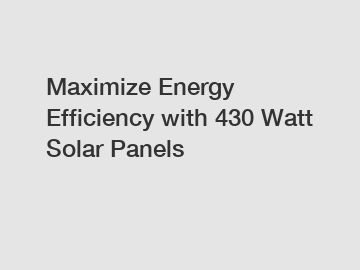
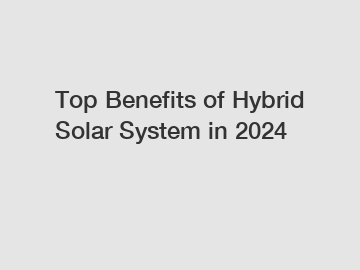
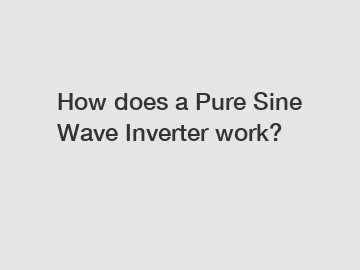
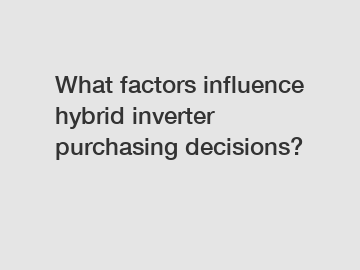


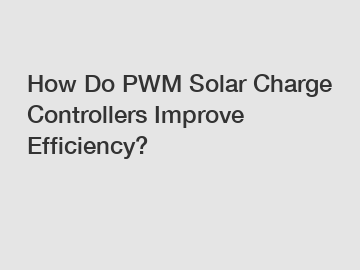

Comments
Please Join Us to post.
0